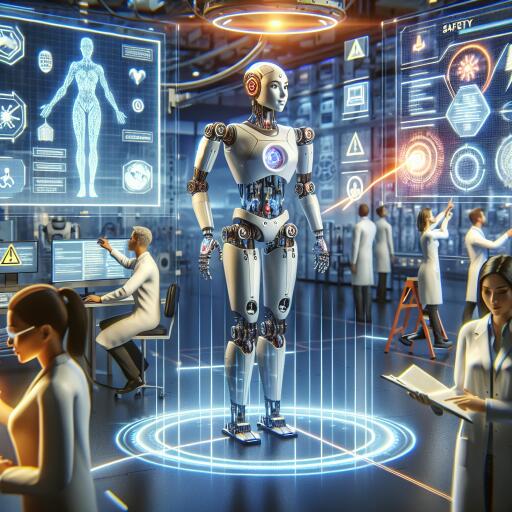New Approach May Enhance Robot Reliability and Safety
Robots traditionally operate in highly controlled environments, designed to follow explicit programming without deviation. However, as Todd Murphey, a Professor of Mechanical Engineering at Northwestern University, points out, the chaotic nature of the real world demands a new breed of robots. These robots must possess the ability to adapt to unstructured environments and handle unpredictable challenges alongside humans. “If we want robots to operate collaboratively with people, they have to be adaptive in ways they have not needed to before,” Murphey asserts.
The quest for robots capable of functioning in the real world hinges on their adaptability and learning capabilities. For these robots to be embraced by society, they must not only prove safe but also demonstrate effectiveness in their tasks. Murphey, alongside his graduate students Thomas Berrueta and Allison Pinosky, is leveraging advancements in machine learning to develop robots that can autonomously navigate and adapt to unstructured spaces—ranging from domestic settings to complex industrial environments.
Their research, published in Nature Machine Intelligence, signifies a breakthrough in applying machine learning to robotics. While robots have benefitted from machine learning for years, achieving reliable and autonomous learning capabilities has been a persistent challenge. This is partly because traditional machine learning models are not directly applicable to physical systems that interact with the real world’s complexity and unpredictability.
Murphey and his team focus on Reinforcement Learning, a machine learning strategy that thrives on trial and error, allowing an autonomous agent, such as a robot, to learn from its environment towards achieving a set goal. They’ve developed an approach termed as maximum diffusion reinforcement learning (MaxDiff RL), which equips robots with the ability to safely and reliably learn new tasks. This innovation has shown promising results in overcoming the limitations of machine learning’s application in robotics.
One of the key obstacles in training robots via machine learning is the need for vast amounts of relevant data, which is hard to generate in physical settings compared to virtual simulations. MaxDiff RL addresses this by generating truly random data from the robot’s interaction with its environment, significantly improving the learning process’s efficiency and reliability.
This novel approach could redefine the future of robotics, shifting from brute-force learning methods to more efficient, intelligent systems that emulate the way biological beings learn. The implications of such advancements extend beyond academic research, with potential applications in real-world robots that can perform complex tasks alongside humans.
As Murphey forecasts, the coming years will see this approach being tested in more practical settings, transitioning from theoretical frameworks to deployed systems in various industries. This progression could pave the way for robots that are not only more adaptable and intelligent but also capable of synergistically working with humans in environments ranging from factories to everyday homes.
This research not only highlights the evolving landscape of machine learning in robotics but also emphasizes the critical role of innovative control architectures in fostering robots capable of autonomous data collection. Such developments mark the dawn of a new era in robotics, aiming for a future where robots can seamlessly integrate into the fabric of human environments, offering enhanced reliability, safety, and efficiency.
Authored by technology writer Poornima Apte, based in Walpole, Mass., this exploration into the frontier of robotics research underscores the potential for groundbreaking advancements in robotic adaptability and learning—a testament to the ingenuity of today’s engineers and researchers in shaping the future of technology.








